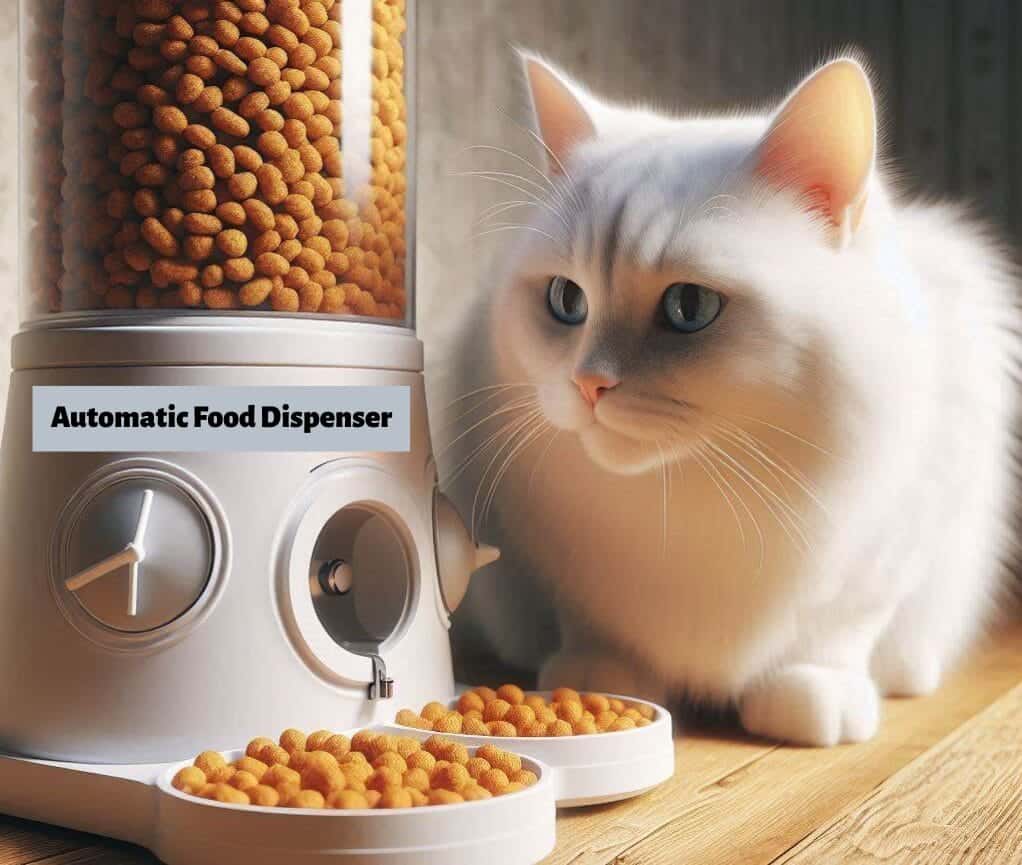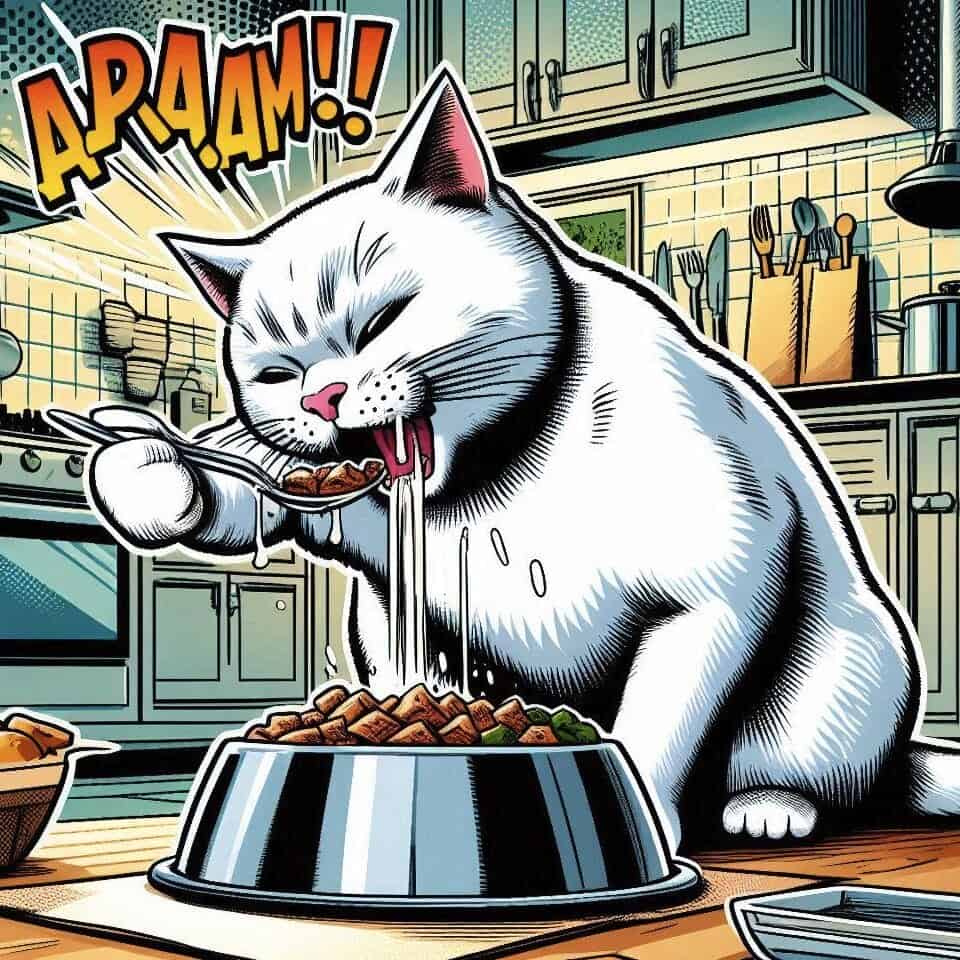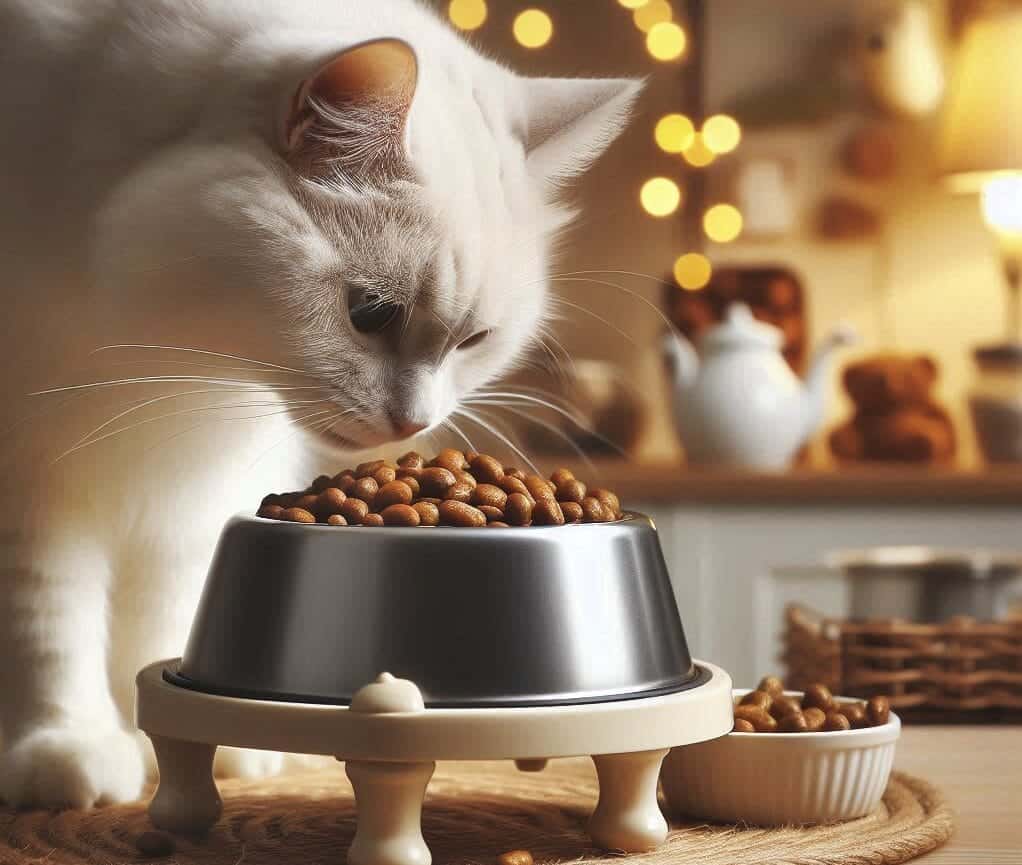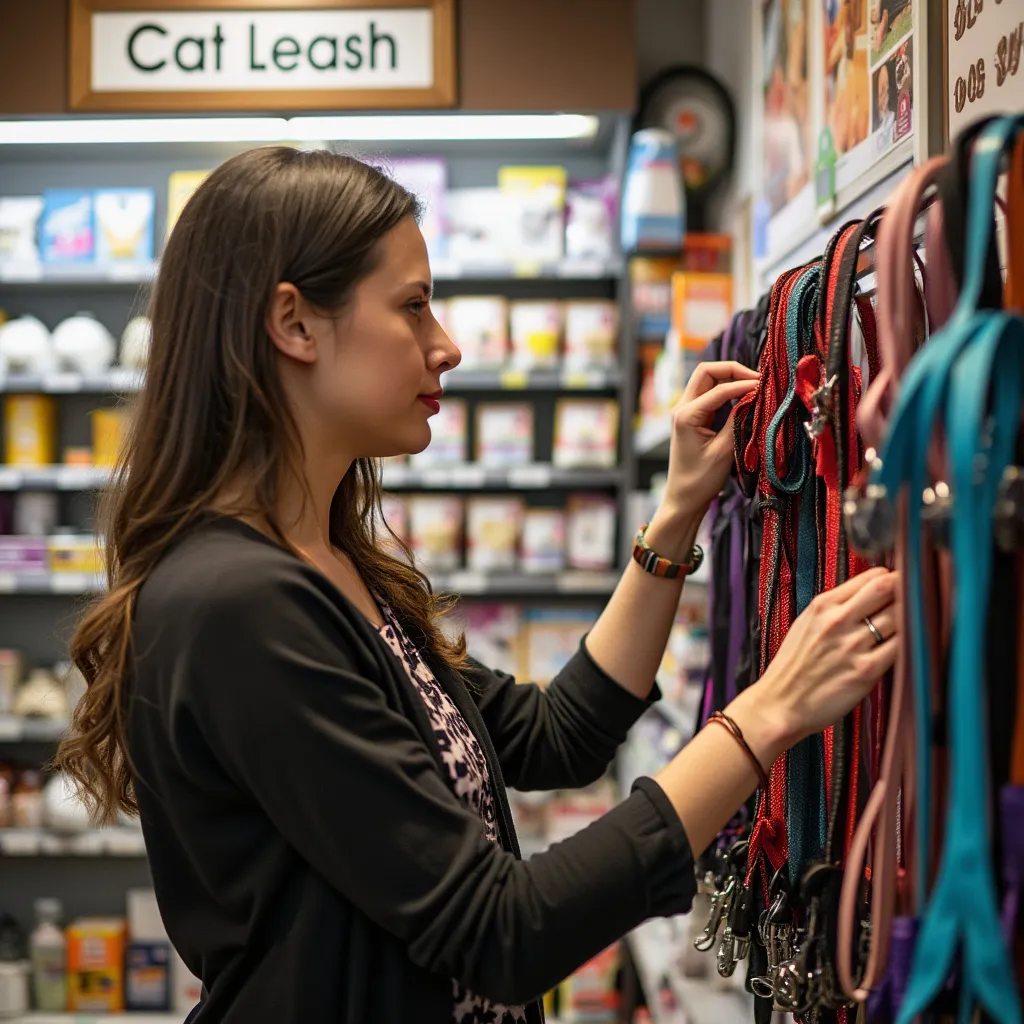Choosing the right food bowl for your cat might seem like a small decision, but it can have a big impact on your feline friend’s well-being. Imagine coming home after a long day, only to find your cat looking at you with those big, expectant eyes, waiting for dinner.
You walk over to the food bowl and notice it’s tipped over, with kibble scattered all over the floor.
Sound familiar?
This little scene is more common than you might think, affecting not only your cat’s meal experience but their overall health.
Did you know that the type of bowl you choose can prevent whisker fatigue, a condition where cats feel discomfort from their sensitive whiskers repeatedly touching the sides of a deep bowl? Also, did you know that certain materials can harbor bacteria if not cleaned properly, posing a health risk?
Choosing a bowl that suits your cat’s specific needs isn’t just about preventing messes—it’s about ensuring they stay happy and healthy.
In this guide, we’ll review from traditional ceramic dishes to modern automatic feeders. We’ll uncover how each type can benefit or hinder your pet, helping you make an informed decision that suits both your lifestyle and your cat’s needs.
Understanding the Importance of Choosing the Right Food Bowl
Impact on Health
Choosing the right food bowl for your cat impacts their health in ways you might not initially consider. Whisker fatigue, for instance, occurs when a cat’s ultra-sensitive whiskers touch the sides of a deep or narrow food bowl too frequently.
This constant stimulation can lead to stress and discomfort during mealtimes, causing your cat to refuse food or become irritable. A wider, shallower bowl can alleviate this issue, making mealtime more pleasant.
The material of the food bowl also plays a critical role in your cat’s health. Ceramic and stainless steel bowls are often recommended over plastic ones because they are less likely to harbor bacteria. Plastic can easily get scratched, creating small crevices where bacteria can thrive, potentially leading to issues such as feline acne.
Opting for non-porous materials ensures a cleaner, safer feeding environment for your pet.
Moreover, the size and design of the food bowl can affect your cat’s digestion. A bowl that is too high or low might force your cat into an uncomfortable position while eating, which can lead to issues like regurgitation or bloating. An ergonomic, appropriately sized bowl supports proper posture during meals, promoting healthier digestion and reducing the risk of gastrointestinal problems.
Enhancing Mealtime Comfort
Comfort during mealtime significantly affects whether your cat enjoys eating. A wobbly or poorly designed bowl can make eating an unsteady, frustrating experience for your feline friend. Look for bowls with non-skid bases that stay put during use, preventing spills and reducing mess.
Stability in your cat’s eating environment allows them to focus on their food, leading to more satisfying, stress-free mealtimes.
Elevated bowls can also enhance comfort, particularly for older cats or those with arthritis. Raising the food bowl a few inches off the ground helps reduce the strain on their neck and joints.
This small adjustment can make a big difference in your cat’s overall eating experience, allowing them to enjoy their meal without discomfort.
Additionally, consider the bowl’s width and depth. A shallow, wide bowl helps prevent whisker fatigue, but it also allows your cat to eat at a more natural pace. Narrow or deep bowls can cause cats to gulp their food too quickly, leading to choking or vomiting. Choosing the right shape can promote slower, healthier eating habits.
Ergonomic Design to Reduce Neck Strain
Ergonomics isn’t just a human concern; your cat’s feeding setup should also prioritize comfort. Cats prefer to eat without having to crouch too low or stretch too high.
Elevated cat bowls cater to this ergonomic need by placing the food at a comfortable height, which is particularly beneficial for preventing neck and joint strain. This is even more important for older cats or those with mobility issues.
You might notice your cat crouching and straining their neck with an incorrectly placed bowl, causing undue stress on their body. An ergonomically designed bowl encourages a natural eating posture, allowing your cat to consume their food with less effort and more ease. This design promotes better posture and can prevent long-term health issues related to poor eating positions.
Furthermore, an ergonomic design can provide a cleaner feeding area.
Cats spill less food when eating from a well-positioned, stable bowl. This not only keeps your feeding area tidy but also minimizes food waste and helps maintain a hygienic environment. A cleaner space leads to a happier cat and a happier you.
Here’s a quick comparison table of bowl features that enhance comfort.
Feature |
Benefit |
Ideal For |
|---|---|---|
| Wide, shallow design | Prevents whisker fatigue | All cats, especially whisker-sensitive cats |
| Non-skid base | Prevents spills and mess, provides stability | Active or playful cats |
| Elevated bowls | Reduces neck and joint strain | Older cats, cats with arthritis |
| Material choice | Ensures hygiene and prevents bacterial growth | All cats |
Choosing the right food bowl isn’t about just picking something cute or convenient. It’s about understanding your cat’s unique needs and preferences to create a comfortable, healthy, and happy eating experience.
Types of Food Bowls
Traditional Food Bowls
Traditional food bowls come in a variety of materials like ceramic, stainless steel, and glass. Materials play a large role in durability and hygiene. Ceramic bowls often have fun designs and a nice weight, which makes them hard to tip over.
However, they can chip or crack, providing a haven for bacteria. Regular checks for chips are necessary to keep your cat safe from eating bacteria-contaminated food.
Stainless steel bowls rank high for durability and ease of cleaning. They don’t harbor bacteria and can withstand a lot of wear and tear. You can toss them in the dishwasher without concern, and they don’t break if dropped. Many cat owners swear by stainless steel bowls for their long-lasting use and minimal upkeep.
Glass bowls, while less common, offer a sleek, non-toxic option. They are easy to clean and don’t get scratched like plastic, which means fewer places for bacteria to hide. Glass, though, is more fragile and can break easily if dropped. If you choose glass, placement in a safe, low-traffic area can mitigate the breakage risk.
Here’s a simple comparison table for traditional bowl materials.
| Material | Pros | Cons |
|---|---|---|
| Ceramic | Heavy, stylish, difficult to tip | Can chip or crack, requires checks |
| Stainless Steel | Durable, non-toxic, easy to clean | Less variety in designs |
| Glass | Non-toxic, easy to clean | Fragile, can break easily |
Flat Bowls
Flat bowls cater to cats sensitive to whisker fatigue. These bowls are typically wide and shallow, preventing whiskers from touching the sides. This design makes eating more comfortable for your cat, reducing stress associated with mealtime.
Flat bowls often come in multiple sizes to fit varying servings and cat sizes, but they can be more prone to spilling.
For cats that tend to scatter their food, a flat bowl might require placement on a mat. This setup not only keeps the feeding area cleaner but also makes the cat’s eating position more natural. Mats can help contain any potential mess and are usually easy to clean. A combination of a flat bowl with a non-slip mat can offer the best of both worlds.
Flat bowls are also helpful for cats with brachycephalic (flat-faced) features, such as Persians and Himalayans. These breeds benefit from the easy access to food presented by a flat bowl, as their facial structure makes traditional deep bowls challenging to use.
Choosing the right design can ensure that your flat-faced friend enjoys their meals without any struggle.
Elevated Bowls
Elevated bowls offer several advantages, especially for senior cats or those with joint issues. Raising the bowl off the ground helps reduce strain on the neck, shoulders, and joints during mealtime. This can make a significant difference in comfort for older cats or cats with arthritis, promoting a more relaxed eating experience.
Cats often swallow less air when eating from an elevated position, which helps minimize issues such as bloating and regurgitation. Elevated bowls come at various heights, allowing you to choose the most suitable one based on your cat’s size and needs.
This customization ensures that your cat maintains a comfortable posture while eating.
Elevated bowls also contribute to a cleaner feeding environment. By keeping the food off the floor, there is less chance of dirt and debris contaminating the bowl. Plus, elevated stands often feature non-slip bases, keeping the bowl steady and reducing spills. This setup can make cleaning up after your cat much easier.
Automatic Feeders

Automatic feeders bring a level of convenience that traditional bowls can’t match. These feeders dispense food at set times, ensuring your cat receives consistent meals even when you’re not home. For busy cat owners, automatic feeders offer peace of mind, knowing that their pet will not miss a meal.
Many automatic feeders also allow portion control, which is crucial for managing your cat’s weight and avoiding overfeeding. Some advanced models even include features like app control and meal tracking, providing detailed insights into your cat’s eating habits.
These smart feeders can be a game-changer for maintaining a healthy diet for your cat.
Automatic feeders suit multi-pet households. With programmable settings, you can prevent food stealing and ensure each cat gets the right amount of food. Though they come with a higher initial cost, the benefits of automated, controlled feeding can justify the investment for many pet owners.
Interactive Puzzle Feeders
Interactive puzzle feeders combine mealtime with playtime, making feeding more engaging for your cat. These feeders challenge your cat to work for their food, promoting mental stimulation and physical activity. This can be particularly beneficial for indoor cats that might not get enough exercise or enrichment otherwise.
Puzzle feeders help slow down fast eaters. By making your cat work to access their food, the feeder reduces the risk of choking and vomiting associated with gulping meals too quickly.
This method supports healthier eating habits and can help prevent obesity, as your cat gets more satisfaction from a smaller amount of food.
Using puzzle feeders also helps alleviate boredom, reducing the likelihood of destructive behavior due to lack of stimulation. For cats that spend a lot of time alone, these feeders provide both a challenge and a reward, keeping them entertained and mentally sharp.
Food Bowls with Built-in Scales
Integrated scales in food bowls offer precise portion control, which is essential for managing your cat’s diet and weight. These bowls allow you to measure exact food quantities with ease, ensuring your cat gets the right amount of nutrition without overfeeding.
This feature is particularly useful for cats on a specific diet or those with medical conditions requiring precise food intake.
These bowls often come with digital displays, showing the weight of the food in real-time. This can help you keep track of your cat’s dietary needs and make adjustments as necessary.
For cat owners who are meticulous about their pet’s nutrition, this type of bowl provides a level of precision that traditional bowls can’t match.
Additionally, bowls with built-in scales often have sleek, modern designs that can fit seamlessly into any kitchen or feeding area. Their advanced functionality combined with aesthetic appeal makes them an excellent choice for tech-savvy pet owners.
Here’s a summary table comparing key features of different food bowls.
| Type of Bowl | Key Features | Ideal For |
|---|---|---|
| Traditional Food Bowls | Durable, various materials, easy to clean | General use, various cat needs |
| Flat Bowls | Wide, shallow, prevents whisker fatigue, easy access for flat-faced breeds | Whisker-sensitive cats, brachycephalic breeds |
| Elevated Bowls | Raised height, reduces neck strain, cleaner feeding environment | Older cats, cats with joint problems |
| Automatic Feeders | Timed feeding, portion control, app control options | Busy owners, multi-pet households |
| Interactive Puzzle Feeders | Mental stimulation, slows eating, reduces boredom | Indoor cats, fast eaters |
| Food Bowls with Built-in Scales | Precise portion control, digital display, modern design | Cats on special diets, health-conscious owners |
Selecting the right food bowl means understanding both your cat’s specific needs and your preferences. Whether you value simplicity, convenience, or a combination of both, there’s a bowl that fits every lifestyle. Prioritizing your cat’s comfort and health will ensure they enjoy every meal, making feeding time a positive experience for both of you.
Safety Considerations
Material Safety

Choosing the right material for your cat’s food bowl goes beyond aesthetics and durability—it’s about safety. Plastic bowls, although lightweight and affordable, can pose significant health risks. They often develop scratches over time, creating grooves where bacteria can thrive. This can lead to feline acne or more serious health issues.
Replacing plastic bowls with more durable materials like stainless steel, ceramic, or glass can help prevent these problems.
Stainless steel bowls top the list for safety. They are non-porous, easy to clean, and do not leach harmful chemicals. This material resists bacteria growth, making it ideal for maintaining a hygienic feeding environment.
Regular cleaning keeps stainless steel bowls in prime condition, making them a reliable choice for conscientious cat owners.
Ceramic bowls are another safe option when they are finished with a lead-free glaze. The weight and stability of ceramic bowls make them less likely to tip over during feeding. However, it is important to inspect ceramic bowls regularly for chips and cracks.
Damaged bowls can harbor bacteria and should be replaced immediately to ensure the safety of your cat.
Here’s a table comparing the safety aspects of different materials.
| Material | Safety Features | Potential Risks |
|---|---|---|
| Plastic | Lightweight, cheap | Scratches harbor bacteria, potential toxins |
| Stainless Steel | Non-porous, durable, easy clean | None if well-maintained |
| Ceramic | Stable, aesthetic | Can chip/crack, must be lead-free |
| Glass | Non-toxic, stylish | Fragile, can break easily |
Cleaning and Maintenance
Proper cleaning and maintenance of your cat’s food bowl are essential for preventing bacterial build-up and ensuring your cat’s health. Food residue, saliva, and bacteria can accumulate quickly, especially in plastic bowls.
Washing your cat’s bowl daily with mild soap and hot water minimizes the risk of contamination and keeps the feeding area sanitary.
Stainless steel and ceramic bowls can usually go in the dishwasher, providing an easy and effective cleaning method. Glass bowls, while also dishwasher safe, should be handled carefully to avoid breakage. Handwashing glass bowls with a non-abrasive sponge and regular inspections for chips ensure continued safe use.
Establish a routine for deep cleaning. Soak the bowls in a vinegar-water solution once a week to remove any lingering bacteria or odors. After soaking, scrub, rinse thoroughly, and dry completely before refilling.
This routine keeps every type of bowl hygienic and ready for your cat’s next meal.
Regular Cleaning Practices
Consistency in cleaning practices keeps your cat’s food bowl in top condition. Create a daily and weekly cleaning schedule that incorporates both regular washes and deeper cleaning sessions. This consistency reduces the chances of bacteria build-up and keeps your cat’s feeding area gleaming.
Daily cleaning removes immediate remnants of food and prevents residue build-up. For a deeper clean, soaking bowls in a mild bleach solution (one part bleach to ten parts water) for about ten minutes can effectively sanitize them.
Always rinse thoroughly to ensure no bleach residue remains, which can be harmful to your cat.
Regularly inspect bowls for any signs of wear and tear. Chips, cracks, or deep scratches compromise the integrity of the bowl and can harbor harmful bacteria. Promptly replace any damaged bowls to maintain a safe and clean feeding environment for your cat.
Here’s a quick reference table for cleaning practices.
| Cleaning Frequency | Cleaning Method |
|---|---|
| Daily | Wash with mild soap and hot water |
| Weekly | Soak in vinegar-water or bleach solution, then scrub |
| Regular Inspection | Check for cracks, chips, and scratches, replace as needed |
Proper cleaning and maintenance of your cat’s food bowl are not just routine tasks—they are pivotal aspects of responsible pet ownership. By ensuring material safety and adhering to a consistent cleaning schedule, you protect your cat from potential health risks and foster a healthier, happier living environment.
Specific Cat Needs and Preferences
Cats with Whisker Fatigue
Whisker fatigue is a real issue for many cats. If your feline friend frequently avoids their food or seems hesitant at mealtimes, their whiskers might be the culprit. Sensitive whiskers can touch the sides of a deep or narrow bowl, causing discomfort and stress.
Opt for wide, shallow bowls that allow your cat’s whiskers to stay clear of the sides, ensuring a more pleasant eating experience.
To further reduce stress, look for bowls with low rims or even flat plates. Cats with sensitive whiskers often prefer these designs as they minimize contact. A wider bowl also helps your cat eat at a more relaxed pace, which can aid digestion and overall well-being.
Switching to a whisker-friendly bowl can transform mealtime from stressful to enjoyable.
For those passionate about creating the best environment for their cats, invest in specially designed whisker fatigue bowls. Brands focus on both form and function, offering attractive designs that also cater to your cat’s comfort. Research and reviews from other cat owners can help in choosing the most effective bowl for combatting whisker fatigue.
Here’s a quick comparison of typical bowl shapes for whisker comfort.
| Bowl Shape | Benefits | Best For |
|---|---|---|
| Wide, Shallow Bowls | Prevent whisker fatigue, easy access | Cats with sensitive whiskers |
| Low Rim Plates | Minimal whisker contact, reduces stress | Picky eaters, cats with sensitive whiskers |
| Deep, Narrow Bowls | Not recommended, can cause discomfort | N/A |
Cats with Specific Dietary Needs
Cats with special dietary needs often benefit from food bowls designed to manage portion sizes accurately. Auto-feeders with portion control features can be invaluable for cats on restricted diets.
They dispense precise amounts of food at set times, ensuring your cat gets the right nutrients without overfeeding. This is particularly important for cats that need weight management or have specific health conditions like diabetes.
For cats that require different types of food, such as a mix of dry and wet, dual-compartment bowls can be very useful. These bowls keep different types of food separated, preventing unwanted mixing and ensuring that your cat enjoys their meals as intended.
Additionally, using divided bowls can help with portion control, making it easier to monitor your cat’s intake.
Consider using a food-safe scale to measure each portion accurately. This ensures consistency in feeding, which is critical for managing dietary needs.
Tracking your cat’s food intake with a scale can provide insight into their eating habits and help you adjust their diet more effectively.
Cats with Physical Limitations
Cats with physical limitations, such as arthritis or other joint issues, need bowls that minimize strain. Elevated bowls bring food up to a comfortable level, reducing the need for your cat to bend down and stress their neck or joints. This design can make a significant difference for older cats or those with mobility challenges.
Cats with visual impairments or other sensory limitations also benefit from bowls that cater to their needs. High-contrast bowls (for example, brightly colored bowls against a dark floor) can help visually impaired cats locate their food more easily.

Ensuring that the feeding area is consistent and free from obstacles helps create a safer environment for these cats.
For cats that struggle with motor skills, shallow bowls with a larger surface area make it easier to access food without needing precise movements. Combining these thoughtful bowl choices with a stable, non-slip mat makes feeding time more accessible and less stressful for cats with physical challenges.
Here’s a summary table for bowl features catering to specific needs.
| Cat’s Need | Recommended Bowl Features | Benefits |
|---|---|---|
| Whisker Fatigue | Wide, shallow bowls, low rim plates | Reduces stress, easier access |
| Specific Dietary Needs | Auto-feeders, dual-compartment bowls, food scales | Accurate portion control, easy diet management |
| Physical Limitations | Elevated bowls, high-contrast designs, shallow bowls | Reduces strain, easy access, improved safety |
Selecting the right bowl involves understanding your cat’s unique needs and preferences.
By focusing on their specific requirements, whether it’s managing whisker fatigue, adhering to dietary restrictions, or accommodating physical limitations, you create a more enjoyable and healthier feeding experience for your beloved feline.
Summing Up
Choosing the right food bowl for your cat goes beyond simply picking a container for their meals. It’s about enhancing their health, comfort, and overall well-being. Understanding the impact of whisker fatigue and ensuring the bowl material is safe can prevent common issues that affect your cat’s enjoyment of mealtime.
Elevated or ergonomic designs can make a significant difference for older cats or those with physical limitations, supporting better posture and digestion.
By considering your cat’s specific needs and preferences, you create a feeding setup that not only satisfies them but also enriches their daily routine.
So, take the time to select the best food bowl for your cat. 😻
It’s a small change that can make a big difference in their life.

In her previous life, Lisa traveled extensively, both for work and leisure. After the pandemic struck, Lisa locked up her luggage and adopted a cat ever since.
Lisa is now an avid cat lover, she devotes most of her free time serving as butler to her adorable feline at home. When she is not with her cat, she can be seen using her phone sourcing for the latest cat supplies online.

